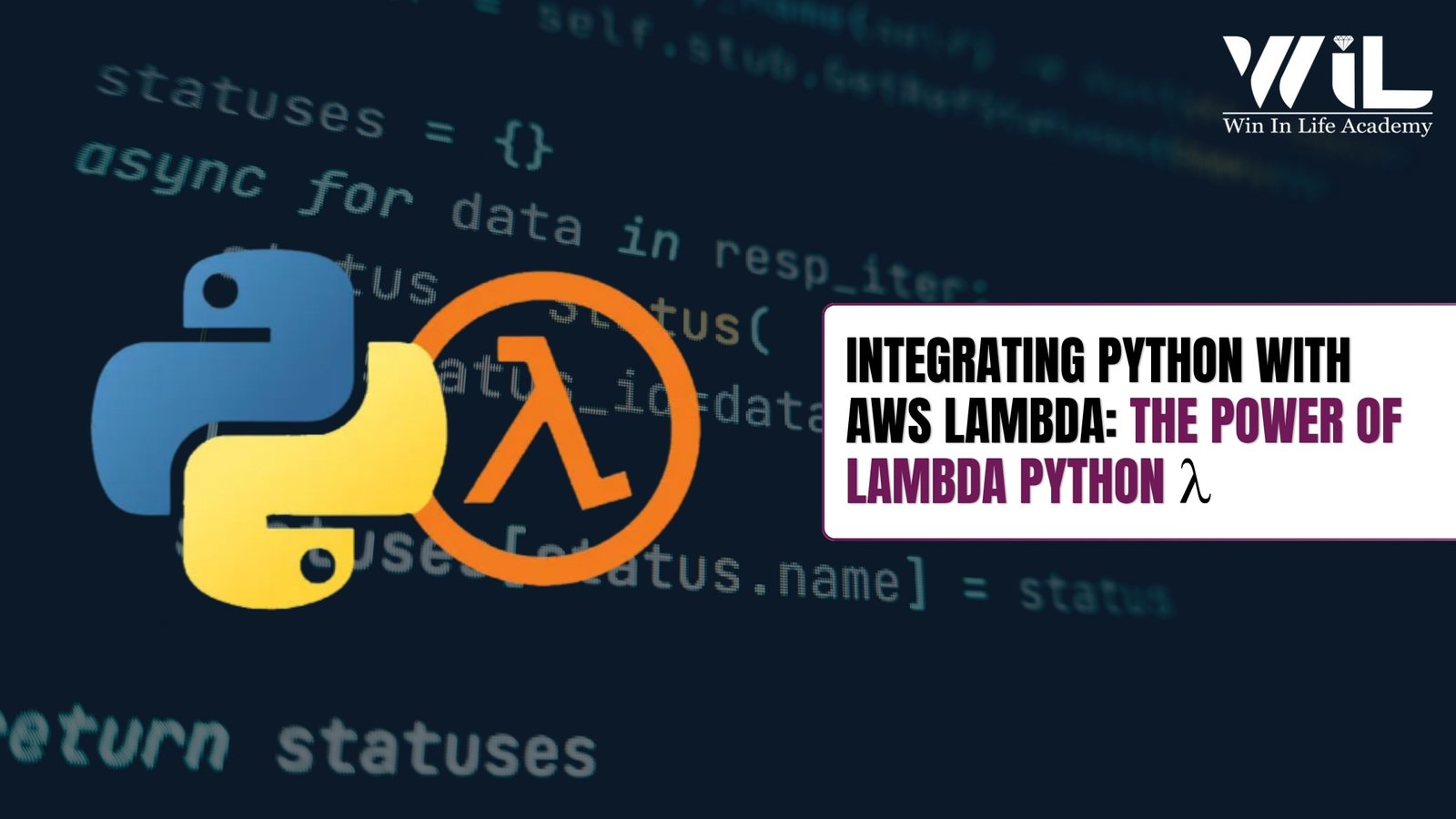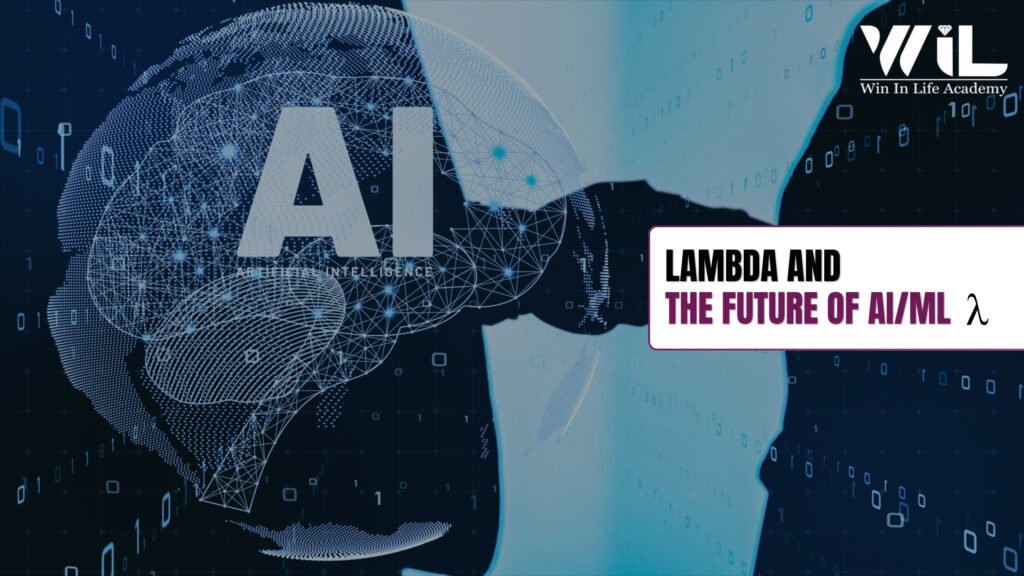Artificial Intelligence and Machine Learning are more efficient; scalability, and agility are leading in this digital landscape. Developers and data scientists are constantly seeking innovative approaches to build, deploy, and manage their intelligent systems more effectively. Lambda Function – a concept that, while seemingly simple, offers profound implications for how we architect modern AI and ML solutions.
This comprehensive guide delves into the intricacies of lambda functions, from their fundamental role in Python programming to their transformative impact within serverless computing paradigms like AWS Lambda.
We will explore how these compact, anonymous functions streamline code, enable powerful data transformations, and serve as the backbone for highly scalable and cost-efficient AI and ML infrastructures. Whether you’re a seasoned AI practitioner or an aspiring data scientist, understanding the strategic application of lambda functions is crucial for unlocking unprecedented levels of productivity and innovation in your projects.
Enroll Now: AI and ML course
The Essence of Lambda: A Pythonic Perspective
A lambda function in Python is an anonymous, single expression function. Unlike traditional functions defined with the def keyword, lambda functions do not require a formal name. They are concise, inline constructs designed for situations where a small function is needed for a short period, often as an argument for a higher-order function. The syntax is elegantly simple: lambda arguments: expression. The expression is executed, and its result is implicitly returned.
Why Lambda in Python for AI/ML?
While def functions offer greater power and flexibility for complex logic, lambda functions excel in their conciseness and immediate utility, making them invaluable in data-intensive AI and ML tasks:
- Conciseness and Readability for Simple Operations: When performing quick, one-off operations on data, a lambda function can significantly reduce common code. For instance, sorting a list of data points based on a specific element or transforming features with a simple arithmetic operation.
- Integration with Higher-Order Functions: This is where Python lambda functions truly shine in AI and ML. They are frequently used with built-in functions such as map (), filter (), and reduce () – operations that are fundamental to data preprocessing, feature engineering, and result aggregation.
- map () for Data Transformation: In AI and ML, data often needs to be transformed before it can be fed into a model. map () applies a given function (often a lambda) to every item in a duplicable, returning a new duplicable with the results. For example, normalizing numerical features, converting data types, or applying scaling factors across a dataset is important.
- filter () for Data Selection: When cleaning data or selecting specific subsets for analysis, filter () combined with a lambda allows you to efficiently pick elements that satisfy a certain condition. This is crucial for outlier detection, anomaly filtering, or segmenting data based on criteria relevant to your model.
- reduce () for Aggregation (from functools): While less common for direct element-wise operations, reduce () applies a function cumulatively to the items of a duplicable, reducing it to a single result. This can be useful for aggregating statistics, combining scores, or performing custom aggregations on feature vectors.
- Functional Programming Paradigms: Lambda functions promote a functional programming style, which can lead to more modular, testable, and less error-inclined code in complex AI and ML pipelines. By treating functions as first-class citizens, you can chain operations and create highly expressive data processing flows.
Example: Preprocessing with Python Lambda
Consider a scenario in an AI project where you have a list of sensor readings, and you need to filter out invalid readings (e.g., negative values) and then convert the remaining readings from Celsius to Fahrenheit.
Python
celsius_readings = [25, 22, -5, 30, 18, 0]
# 1. Filter out invalid readings (negative values) using a lambda function
valid_readings = list(filter(lambda x: x >= 0, celsius_readings))
print(f”Valid readings (Celsius): {valid_readings}”)
# 2. Convert valid readings to Fahrenheit using a lambda function
fahrenheit_readings = list(map(lambda c: (c * 9/5) + 32, valid_readings))
print(f”Fahrenheit readings: {fahrenheit_readings}”)
This simple example demonstrates how lambda python facilitates quick, readable data manipulation, which is a constant requirement in AI/ML development.
Serverless Revolution: AWS Lambda in AI and ML Infrastructures

Beyond its role as a compact Python construct, the concept of “lambda” takes on a whole new dimension in the realm of cloud computing, particularly with AWS Lambda. AWS Lambda is a serverless compute service that enables you to run code without provisioning or managing servers. You simply upload your code, and Lambda automatically handles all the underlying infrastructure, including server and operating system maintenance, capacity provisioning, automatic scaling, and logging. Your code is organized into “Lambda functions,” which the service executes only when needed, scaling automatically from zero to thousands of concurrent executions.
Why AWS Lambda is a Significant for AI and ML:
The serverless paradigm offered by AWS Lambda aligns perfectly with many requirements of AI and ML workloads, offering significant advantages over traditional server-based deployments:
- Scalability on Demand: AI and ML tasks often exhibit bursty or unpredictable demand. Model inference, data preprocessing, or feature engineering might require immense computational resources for short periods of time. AWS Lambda automatically scales your functions to meet demand, ensuring low latency and high throughput without manual intervention. This eliminates the need to over-provision resources, leading to cost savings.
- Cost Efficiency (Pay-per-Execution): With AWS Lambda, you only pay for the compute time consumed when your functions are running. There are no idle costs associated with maintaining always on servers. This pay-per-execution model is incredibly cost-effective for event-driven AI and ML applications, where functions are triggered only when specific events occur (e.g., a new data file upload, an API request for a prediction).
- Reduced Operational Overhead: Managing servers, operating systems, and infrastructure is complex and time-consuming. AWS Lambda abstracts these concerns, allowing AI/ML engineers to focus solely on writing code for their models and data pipelines, accelerating development cycles.
- Event-Driven Architecture: Many AI/ML workflows are inherently event-driven. For example:
- A new image uploaded to an S3 bucket triggers a function for image recognition.
- A new record in a DynamoDB table triggers a function for real-time anomaly detection.
- A message arriving in an SQS queue triggers a function for batch inference.
AWS Lambda seamlessly integrates with a vast array of other AWS services, enabling the creation of robust, reactive AI and ML pipelines.
Key AWS Lambda Function Use Cases in AI/ML
The applications of AWS Lambda function in AI/ML are diverse and impactful:
Real-Time Data Preprocessing and ETL:
- Stream Processing: Process real-time streaming data from sources like Kinesis or Kafka for application activity tracking, clickstream analysis, or IoT device data telemetry. AWS Lambda can clean, transform, and enrich data on the fly before it’s stored in a data lake or fed into a model.
- File Processing: When new data files (e.g., CSVs, images, audio) are uploaded to Amazon S3, an AWS Lambda function can be automatically triggered to perform tasks like data validation, format conversion, feature extraction, or even trigger model retraining. This enables real-time data ingestion and immediate processing for ML pipelines.
Serverless Model Inference (Prediction Services):
- One of the most powerful applications is deploying trained ML models as serverless prediction endpoints. When an API Gateway endpoint receives a request, it can trigger an AWS Lambda function that loads a pre-trained model and returns predictions. This is highly scalable and cost-efficient for serving low-latency inference requests.
- Consider a natural language processing (NLP) model for sentiment analysis. A user submits text through a web application, which sends a request to an API Gateway. An AWS Lambda function then takes the text, runs it through the sentiment model (often stored in S3 or EFS), and returns the sentiment score.
Batch Inference and Asynchronous Processing:
- For tasks that don’t require real-time responses, AWS Lambda can be invoked asynchronously for batch processing. For instance, processing a large dataset for predictions overnight or generating reports is important.
- Database Operations and Integration: Reactively process database interactions, such as handling queue messages for Amazon RDS operations or responding to DynamoDB changes for audit logging and automated workflows. This is vital for maintaining data consistency and triggering ML-driven actions based on database events.
Scheduled AI and ML Tasks:
- Executing time-based operations like daily model retraining, data synchronization, report generation, or performance monitoring using cron-like expressions with Event Bridge rules. This ensures your models are always up-to-date, and your data pipelines are consistently maintained.
Building Mobile and IoT Backends:
- Create serverless backends to authenticate and process API requests for mobile applications or IoT devices, where ML models might provide personalized recommendations, perform edge analytics, or control smart devices.
Integrating Python with AWS Lambda: The Power of Lambda Python

The synergy between Python and AWS Lambda is particularly strong, making AWS Lambda Python a preferred choice for many AI and ML practitioners. Python’s rich ecosystem of data science and machine learning libraries (NumPy, Pandas, Scikit-learn, TensorFlow, PyTorch) makes it an ideal language for developing functions that perform complex computations.
Developing an AWS Lambda Python Function for ML Inference:
- Code and Dependencies: You write your Python code, including any necessary ML libraries. These libraries, along with your code, are packaged into a deployment package (a .zip file). For larger dependencies, you might use Lambda Layers or Amazon EFS.
- Handler Function: Your AWS Lambda function needs a handler function, which is the entry point for your code. This function receives an event object (containing data from the trigger) and a context object (providing runtime information).
Python
import json
import numpy as np
# Assume a simple pre-trained model
# In a real scenario, model would be loaded from S3/EFS
# from sklearn.linear_model import LogisticRegression
# model = load_model_from_s3(‘my-ml-model.pkl’)
def lambda_handler(event, context):
try:
# Parse the input data from the event
body = json.loads(event[‘body’])
features = body[‘features’]
# Basic validation
if not isinstance(features, list):
return {
‘statusCode’: 400,
‘body’: json.dumps({‘error’: ‘Features must be a list’})
}
# Convert features to numpy array for model
input_data = np.array(features).reshape(1, -1)
# Perform inference (placeholder for actual model prediction)
# prediction = model.predict(input_data)[0]
# For demonstration, a dummy prediction
prediction = 1 if input_data.sum() > 5 else 0
return {
‘statusCode’: 200,
‘body’: json.dumps({‘prediction’: int(prediction)})
}
except Exception as e:
return {
‘statusCode’: 500,
‘body’: json.dumps({‘error’: str(e)})
}
- Deployment: The deployment package is uploaded to AWS Lambda. You configure the function’s memory, timeout, and trigger.
- Triggering: When the configured trigger (e.g., an API Gateway request, an S3 event) occurs, AWS Lambda invokes your Python lambda function, passing the event data to the handler.
Lambda Functions in the AI/ML Ecosystem
The strategic adoption of lambda functions, both in Python and serverless constructs like AWS Lambda, fundamentally alters how AI/ML solutions are conceived and operated.
- Accelerated Prototyping and Experimentation: The ability to quickly deploy and iterate on small pieces of code (via Python lambdas) or entire microservices (via AWS Lambda) allows AI teams to rapidly test new models, features, or data processing techniques.
- Microservices Architecture for ML: AWS Lambda encourages a microservices approach to ML systems, where different components (e.g., data ingestion, feature engineering, model training, inference) are decoupled and can be developed, deployed, and scaled independently. This enhances modularity, resilience, and sustainability.
- Cost Optimization: The pay-per-execution model of serverless lambda functions is a major draw for AI/ML projects, especially those with fluctuating workloads. It avoids the high costs associated with maintaining always-on compute instances for sporadically used ML services.
- Democratization of ML Deployment: By simplifying infrastructure management, AWS Lambda lowers the barrier to deploying and operationalizing ML models, making advanced AI capabilities more accessible to a wider range of developers and businesses.
- Edge Computing and IoT: For scenarios requiring low latency processing closer to data sources, such as IoT devices, smaller Python lambda functions can be deployed on edge devices, while AWS Lambda handles complex processing in the cloud.
Lambda and the Future of AI/ML

While our primary focus has been on Python and AWS, it’s worth noting that the “lambda” concept extends to other programming paradigms and platforms. For instance, Microsoft Excel’s LAMBDA function allows users to create custom, reusable functions within spreadsheets, which can be useful for data analysis and quick calculations in business intelligence related to AI/ML data insights. This highlights the universal appeal of concise, reusable functional units.
However, the true revolution lies in the synergy between Python’s flexible lambda syntax and AWS’s robust server-less infrastructure. This combination empowers AI/ML engineers to build highly responsive, scalable, and cost-effective solutions that can adapt to the dynamic demands of modern data science.
To Sum Up
In the world of Artificial Intelligence and Machine Learning, the strategic utilization of Lambda functions stands as a testament to efficient design and operational excellence. From the elegant conciseness of Python lambda expressions that streamline data manipulation to the scalable, cost-effective power of AWS Lambda functions orchestrating complex serverless AI pipelines, their impact is undeniable. These anonymous, event-driven constructs enable a level of agility and resource optimization that is crucial for building next-generation intelligent systems.
Embracing the serverless paradigm with AWS Lambda Python allows you to focus less on infrastructure and more on innovation—crafting powerful models, designing intelligent agents, and extracting valuable insights from vast datasets. By leveraging lambda functions, you can accelerate your development cycles, reduce operational overhead, and ensure your AI/ML solutions are robust, responsive, and ready for future challenges.
Are you ready to truly accelerate your learning and master these transformative technologies?
Win in Life Academy offers comprehensive courses designed to equip you with the skills and knowledge needed to excel in this exciting field. Visit Win in Life Academy today and take the definitive step towards becoming a leader in AI/ML!
References:
Python Lambda
https://www.w3schools.com/python/python_lambda.asp
What is AWS Lambda?
https://docs.aws.amazon.com/lambda/latest/dg/welcome.html
Python Lambda Functions
https://www.geeksforgeeks.org/python/python-lambda-anonymous-functions-filter-map-reduce
LAMBDA Function
https://support.microsoft.com/en-us/office/lambda-function-bd212d27-1cd1-4321-a34a-ccbf254b8b67
Python Lambda Functions: A Beginner’s Guide







